Enshrining the most sacred prayer to Guru Padmasambhava, the Vajra Seven-Line Prayer, White Lotus elucidates its five layers of meaning as revealed by the eminent scholar Mipham the Great. This commentary now makes this treasure, which has been kept secret among the great masters of Tibet for generations, available as a source of blessings and learning for all.Tulku Thondup, author of Peaceful Death, Joyful Rebirth The Seven-Line Prayer is the most majestic of all prayers to Guru Padmasambhavathe buddha for our time. It has been cherished over the centuries as the most powerful way to invoke his blessings. How wonderful that we have this commentary, one of Mipham Rinpoches most inspiring works, to elucidate these sacred verses and reveal their profound meaning.Sogyal Rinpoche, author of The Tibetan Book of Living and Dying Jamgn Mipham Rinpoches Pema Karpo is a beautiful and essential text describing the outer, inner, and secret ways that the wisdom in Vajrayana manifests as Padmasambhava. This new translation will be of great benefit to those traveling on the path of tantra.The Sakyong, Jamgn Mipham Rinpoche, author of Turning the Mind into an Ally and Ruling Your World ABOUT THE BOOKThe commentary translated in these pages is unusual and rare. But if the commentary is a rarity, its subject matterthe seven-line invocation of Padmasambhavais one of the best-known prayers in the Tibetan Buddhist world.The overall significance of the Seven-Line Prayer is perhaps best appreciated in relation to a practice called guru-yoga, or union with the nature of the guru. The purpose of guru-yoga is to purify and deepen the students relationship with his or her teacher. It is introduced as one of the preliminary practices, and it remains crucialin fact, its importance increasesas one progresses through the more advanced levels of the tantric path. The cultivation of devotion to the guru and the blending of ones mind with his or her enlightened mind is, in the words of Dilgo Khyentse Rinpoche, the most vital and necessary of all practices and is in itself the surest and fastest way to reach the goal of enlightenment.Regarding the origin of this commentary, Mipham refers in the colophon to an event that triggered the abrupt appearance in his mind of the hidden meaning of the prayer. It is interesting to note that the language Mipham uses suggests that the commentary itself is not an ordinary composition but perhaps a treasure teaching, specifically a mind-treasure or gongter. THE PADMAKARA TRANSLATION GROUP, based in France, has a distinguished reputation for all its translations of Tibetan texts and teachings. Its work has been published in several languages and is renowned for its clear and accurate literary style.Sign up to learn more about our books and receive special offers from Shambhala Publications.

Or visit us online to sign up at shambhala.com/eshambhala.

Buddha Shakyamuni

Guru Rinpoche
The Padmakara Translation Group gratefully acknowledges the generous support of the Tsadra Foundation in sponsoring the translation and preparation of this book.


Shambhala Publications, Inc.
Horticultural Hall
300 Massachusetts Avenue
Boston, Massachusetts 02115
www.shambhala.com
2007 by the Padmakara Translation Group
Cover art: Guru Padmasambhava. Used by permission of Thinley Norbu Rinpoche.
All rights reserved. No part of this book may be reproduced in any form or by any means, electronic or mechanical, including photocopying, recording, or by any information storage and retrieval system, without permission in writing from the publisher.
Library of Congress Cataloging-in-Publication Data
Mi-pham-rgya-mtsho, Jam-mgon Ju, 18461912.
White lotus: an explanation of the Seven-line prayer to Guru Padmasambhava / Jamgn Mipham; translated by the Padmakara Translation Group.
p. cm.
Includes translation of Tibetan commentaries and Tibetan texts.
Includes bibliographical references and index.
eISBN 978-0-8348-2567-3
ISBN: 978-1-59030-511-9
(hardcover: alk. paper)
1. Padma Sambhava, ca. 717ca. 762Prayers and devotionsHistory and criticism. 2. Rin-ma-pa (Sect)Prayers and devotionsHistory and criticism. I. Comit de traduction Padmakara. II. Title.
BQ5593.P3M536 2007
294.3443dc22
2007015360

C ONTENTS

A GURU-YOGA BASED ON THE S EVEN- L INE P RAYER


T HE ORIGIN of the Buddhist teachings in our world was the Buddha Shakyamuni, who in his unequaled compassion for beings and his wish to bring them all to perfect freedom is praised in the scriptures as a white lotus among the thousand Buddhas of this fortunate kalpa. Before he passed into mahaparinirvana, the Buddha prophesied that his activities would be prolonged and his teachings propagated and protected by Padmasambhava, whom Tibetan Buddhists frequently refer to as Guru Rinpoche, the Precious Master.
Invited by the Dharma king Trisongdetsen at the advice of the great abbot Shantarakshita, Guru Rinpoche went to Tibet and spread the teachings there on a vast scale. He made Tibet and the whole of the Himalayan region into a sacred land where the Buddhadharma would prosper even after it had long disappeared in India. Thanks to the power of Guru Rinpoches blessings, not only the oral and treasure transmissions of the Nyingmapas but also the teachings and practices of the other schools of Tibetan Buddhism have been able to flourish and have been preserved intact into our time. All of us who have an interest in the Tibetan Buddhist tradition should be keenly aware of the debt we owe to Guru Rinpoche.
He is the perfect teacher, the guide for those who wish to progress on the path; and all prayers addressed to him are of immense value. Of these, the most important is surely the Seven-Line Prayer. Not only is it the most powerful of invocations, but its every word is filled with deep meaning. Thanks to the marvelous wisdom and learning of Mipham Rinpoche, we have a commentary that lays before us all the different ways in which the Seven-Line Prayer can be understood. It shows how this precious invocation contains the whole of the Secret Mantra in concentrated form.
At whatever stage we are, beginners or otherwise, the Seven-Line Prayer should be our constant companion. It is like a golden key to the treasure house of the teachings. Above all, to recite the Seven-Line Prayer is the best way to invoke Guru Rinpoche so that we can rest in his presence, cultivate devotion toward him, and thus receive his blessings.
Next page
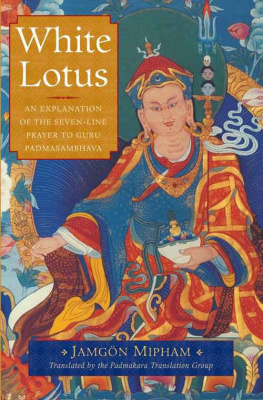


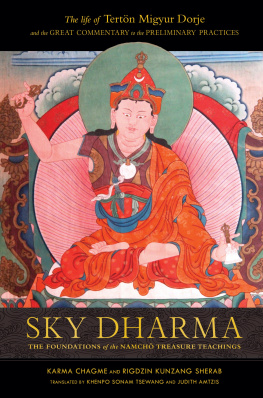
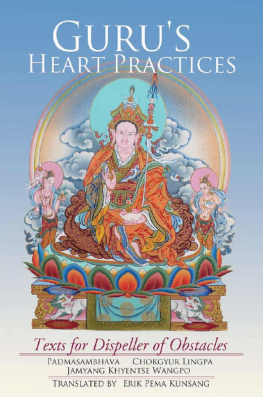
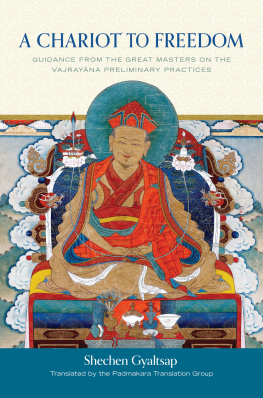

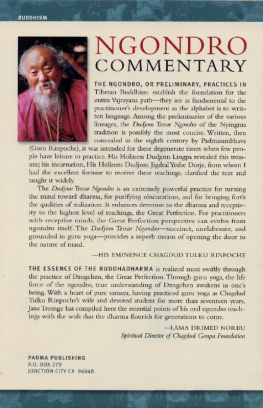

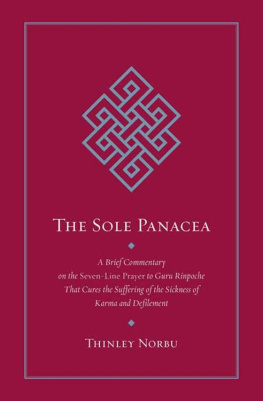

 Or visit us online to sign up at shambhala.com/eshambhala.
Or visit us online to sign up at shambhala.com/eshambhala. 




